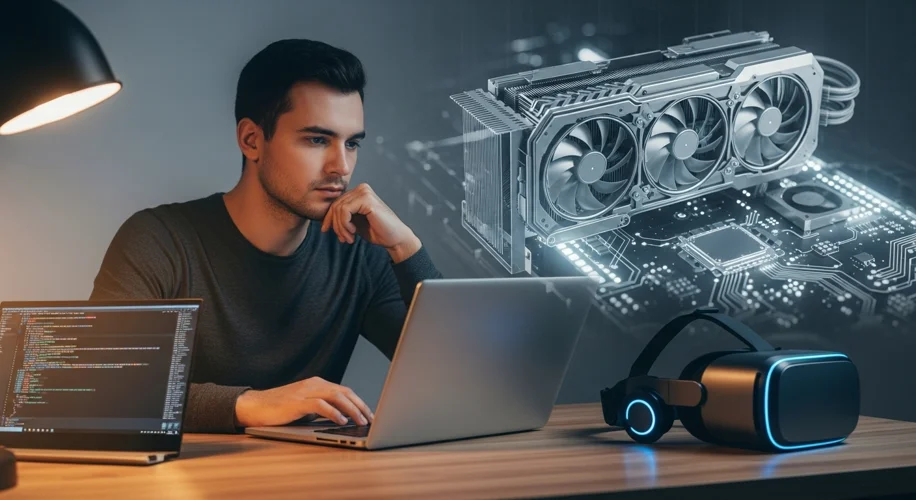Hey everyone! So, you’ve been eyeing those awesome PC VR games and experiences, but you’re wondering if your current laptop can actually handle it. I get it. Diving into PC VR is super exciting, but the hardware requirements can feel like a cryptic puzzle.
Let’s break it down. The biggest factors are your graphics card (GPU), processor (CPU), RAM, and sometimes even your storage speed.
Graphics Card (GPU): The MVP
This is usually the most critical component. PC VR demands a lot of graphical power to render two separate images (one for each eye) at high frame rates and resolutions. Think of it like running two games at once, but way more intense.
Generally, you’ll want at least an NVIDIA GeForce RTX 3060 or an AMD Radeon RX 6600 XT to get a decent experience. Higher-end cards like the RTX 4070 or RX 7800 XT will give you a much smoother, more detailed experience, especially with higher resolution headsets.
Processor (CPU): The Brains
Your CPU handles the game logic, physics, and AI. While the GPU does the heavy lifting for visuals, a weak CPU can bottleneck your system, leading to stuttering and lag, even with a powerful GPU. A modern mid-range CPU like an Intel Core i5 (12th gen or newer) or AMD Ryzen 5 (5000 series or newer) is usually a good starting point.
RAM: The Workspace
VR applications and the operating system itself can be memory-hungry. Most PC VR setups recommend at least 16GB of RAM. If you’re only running 8GB, you might find yourself running into performance issues, especially when multitasking or running more demanding VR titles.
Storage: Speed Matters
While not as critical as the GPU or CPU, having your VR games installed on an SSD (Solid State Drive) will significantly reduce loading times. If your laptop only has a traditional HDD, you’ll notice much longer waits to get into your VR world.
How to Check Your Laptop Specs
It’s pretty simple! On Windows, just search for “dxdiag” in the Start menu and run the command. This will open the DirectX Diagnostic Tool, which shows you your Processor, Memory (RAM), and Graphics card information under the “Display” tab.
What if my laptop is just below spec?
If your specs are a little lower than recommended, don’t despair entirely. You might still be able to run some VR experiences, but you’ll likely need to lower graphical settings significantly. This can sometimes take away from the immersion, so it’s a trade-off.
Ultimately, for the best PC VR experience, having hardware that meets or exceeds the recommended specs is key. It ensures you get smooth frame rates and the stunning visuals that make VR so compelling. Check those specs and see if you’re ready to jump into the virtual world!

